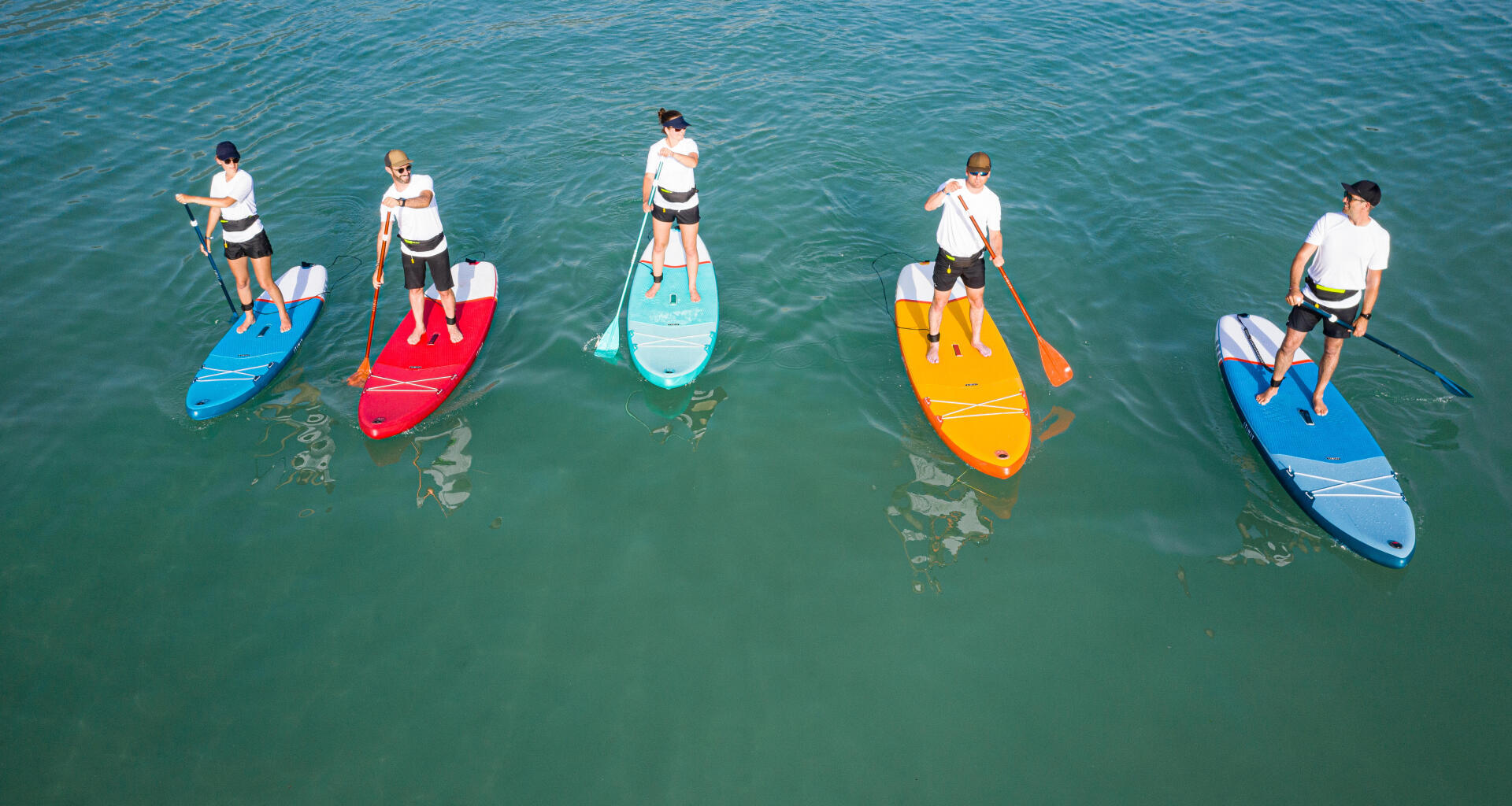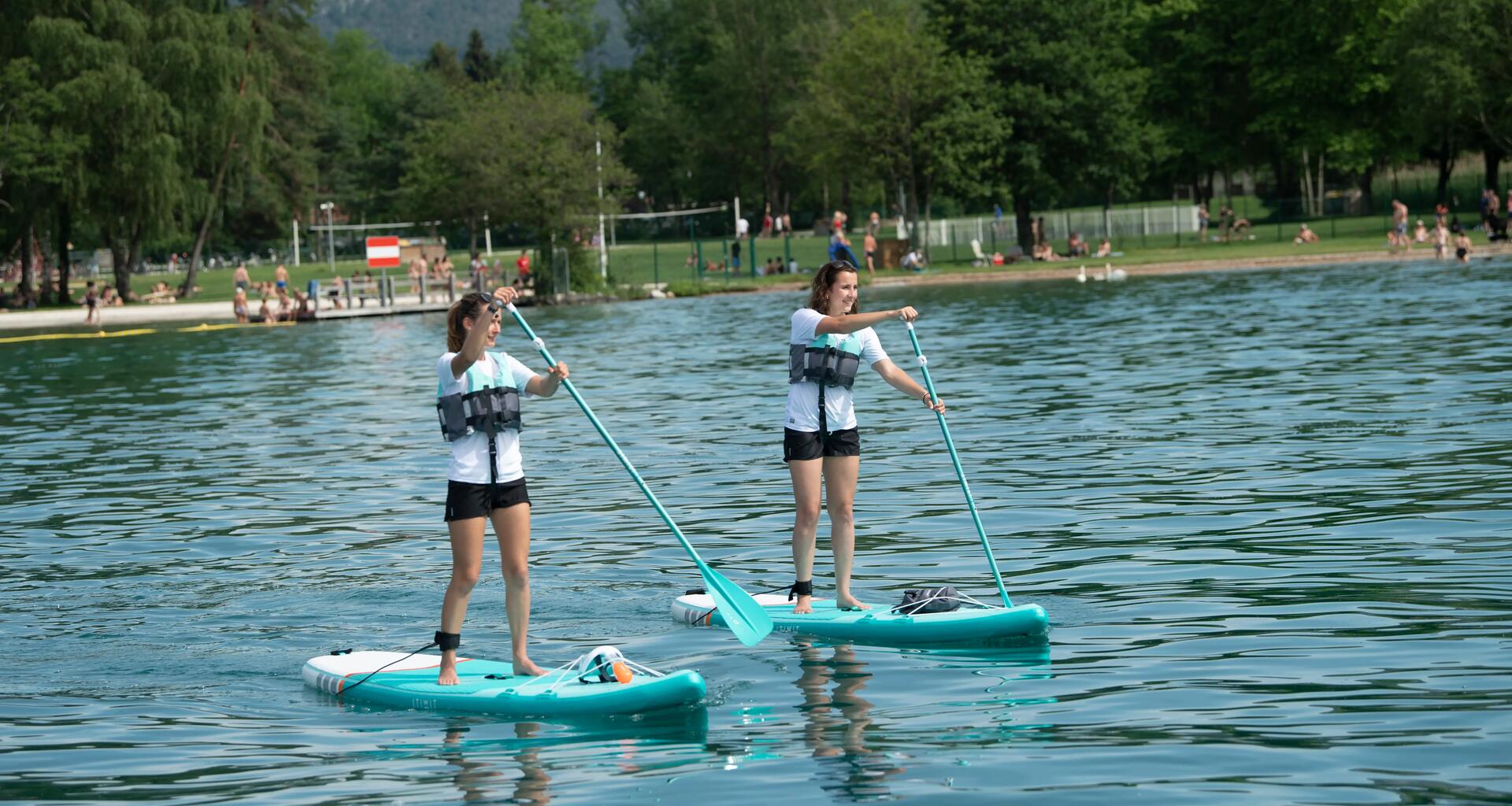What type of equipment is best for stand-up paddle beginners?
At first, you will go out on occasional short trips on a calm body of water (lake, river or sea). You will therefore need stability. The best thing for you is a wide and thick stand-up paddle board (also called a "SUP"). For easy transportation, you can choose an inflatable board. This type of board fits in a large backpack that can easily fit in the boot of the car. The inflatable technology called "dropstitch" gives excellent stiffness to the board when inflated to the indicated pressure. It is also very shock resistant and does not cause injury if you fall onto the SUP. For your own safety, always use the leash (the cord that permanently connects you to the board), even on flat water.
For the paddle, a height-adjustable model (for the whole family) made from aluminium (durable) will be perfectly suitable. If you choose a split paddle, it will fit in the inflatable SUP's bag.
Finally, don't forget to wear a buoyancy aid if you are not at ease in the water.








